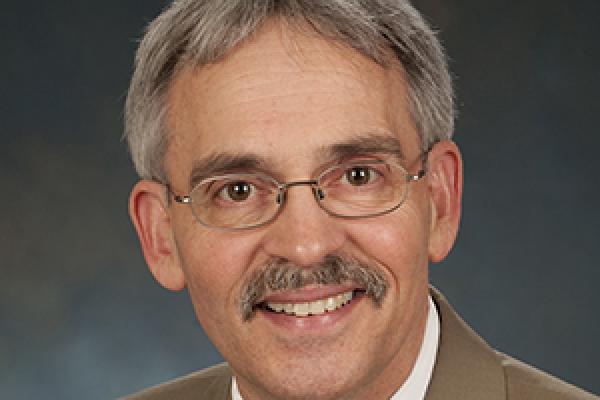Ohio State astronomer awarded prestigious NASA medal

Bradley Peterson, professor emeritus and former chair of the Department of Astronomy, has been awarded a NASA Exceptional Service Medal, one of the space agency’s most prestigious annual honors.
Previous recipients of the Exceptional Service Medal include astronauts Buzz Aldrin, the second human on the moon; Peggy Whitson, former NASA Chief Astronaut and the first female commander of the International Space Station; and Jim Lovell, commander of the famous Apollo 13 mission.
Peterson received the award on March 28 from Robert Lightfoot, acting administrator of NASA, for longstanding contributions to the organization through his service as a member of the NASA Advisory Council, NASA’s highest-level advisory committee, as well as chair of the council’s Science Committee.

Bradley Peterson (left), professor emeritus of astronomy, stands with Robert Lightfoot, acting administrator of NASA, after receiving the NASA Exceptional Service Medal.
“It’s obviously quite an honor to have your name even distantly associated with some of the true luminaries of the space program,” Peterson said.
But the Exceptional Service Medal also recognizes many people who have made less visible, but nevertheless extraordinary, contributions … the scientists, engineers, managers and flight operations personnel who enable NASA to carry out its broad mission.”
Peterson is currently a Distinguished Visiting Astronomer at the Space Telescope Science Institute in Baltimore, which runs the Hubble Space Telescope, and community co-chair of NASA’s Science and Technology Definition Team for a future Large Ultraviolet Optical and Infrared Surveyor (LUVOIR), which could become NASA's flagship space telescope of the 2030s.
LUVOIR is one of four potential projects being studied by NASA in preparation for the 2020 Astronomy and Astrophysics Decadal Survey, a report issued once every 10 years by the U.S. National Research Council identifying research priorities and funding recommendations within astronomy and astrophysics.
The James Webb Space Telescope, NASA’s next premier observatory scheduled for launch in 2020, was initiated through this process.
“LUVOIR is currently envisaged as a 15-meter (49-foot) telescope that will have the ability to characterize the atmospheres of exoplanets in the habitable zone of nearby stars, as well as carry out a broadly based program in astrophysics with 100 to 1000 times the sensitivity of the Hubble Space Telescope,” Peterson said.
He is also a fellow and Astronomy Section Chair of the American Association for the Advancement of Science and a 2010 recipient of Ohio State’s Distinguished Scholar Award. He plans to return to Ohio State this fall to continue his research on active galactic nuclei, which is answering fundamental questions about galaxy evolution.
“It’s very gratifying to know that my efforts have been appreciated and that I have been able to serve the nation in some modest way,” Peterson said.
